|
From Dinosaurs to
Elephants
and Everything in Between
by Bob
Brooke
The
Field Museum of Natural History (FMNH), also known as The Field Museum,
is a natural history museum in Chicago, Illinois, and is one of the
largest such museums in the world.
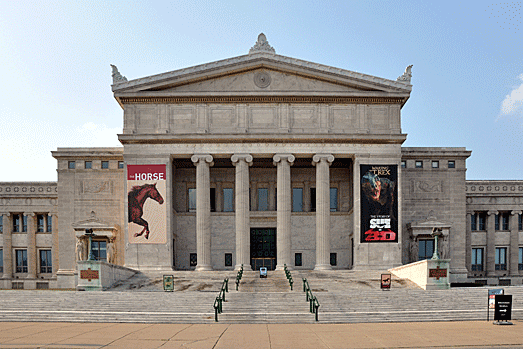
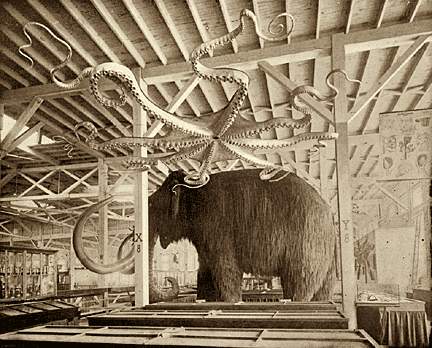 The
diverse, high-quality permanent exhibitions, which attract up to two
million visitors annually, range from the earliest fossils to past and
current cultures from around the world to interactive programming
demonstrating today's urgent conservation needs. The
diverse, high-quality permanent exhibitions, which attract up to two
million visitors annually, range from the earliest fossils to past and
current cultures from around the world to interactive programming
demonstrating today's urgent conservation needs.
These collections include the full range of existing biodiversity, gems,
meteorites, fossils, and rich anthropological collections and cultural
artifacts from around the globe.
The scientific collections of the Field Museum originated from the
specimens and artifacts assembled between 1891 and 1893 for the World
Columbian Exposition. Already at its founding, the Field Museum had a
large anthropological collection.
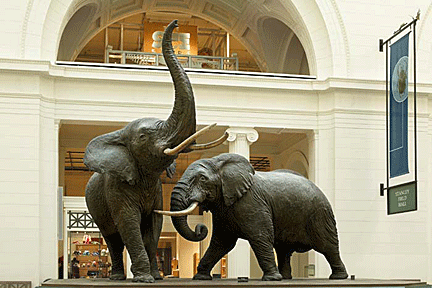 In
order to house for future generations the exhibits and collections
assembled for the Exposition, Edward Ayer convinced the merchant
Marshall Field to fund the establishment of a museum. Originally titled
the Columbian Museum of Chicago in honor of its origins, the State of
Illinois incorporated the Field Museum on September 16, 1893, for the
purpose of the "accumulation and dissemination of knowledge, and the
preservation and exhibition of artifacts illustrating art, archaeology,
science and history." The Columbian Museum of Chicago occupied the
Palace of the Arts, the only building remaining from the World's
Columbian Exposition in Jackson Park. It’s now home to the Chicago
Museum of Science and Industry. In
order to house for future generations the exhibits and collections
assembled for the Exposition, Edward Ayer convinced the merchant
Marshall Field to fund the establishment of a museum. Originally titled
the Columbian Museum of Chicago in honor of its origins, the State of
Illinois incorporated the Field Museum on September 16, 1893, for the
purpose of the "accumulation and dissemination of knowledge, and the
preservation and exhibition of artifacts illustrating art, archaeology,
science and history." The Columbian Museum of Chicago occupied the
Palace of the Arts, the only building remaining from the World's
Columbian Exposition in Jackson Park. It’s now home to the Chicago
Museum of Science and Industry.
In
1905, the museum changed its name to the Field Museum of Natural History
to honor its first major benefactor and to reflect its focus on the
natural sciences. From 1943 to 1966, it was known as the Chicago Natural
History Museum. In 1921, the Museum moved from its original location in
Jackson Park to its present site on Chicago Park District property near
downtown. By the late 1930s the Field had emerged as one of the three
premier museums in the United States, the other two being the American
Museum of Natural History in New York and the National Museum of Natural
History at the Smithsonian Institution in Washington DC.
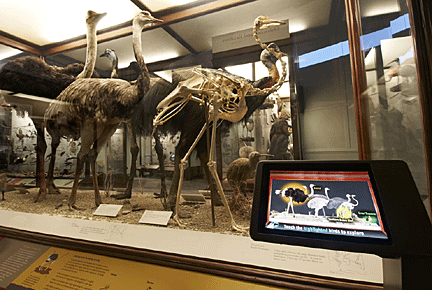 Animal
Halls Animal
Halls
Animal exhibitions and dioramas such as Nature Walk, Mammals of Asia,
and Mammals of Africa that allow visitors an up-close look at the
diverse habitats that animals inhabit. Most notably featured are the
infamous man-eating lions of Tsavo. The Mfuwe man eating lion is also on
display.
Evolving Planet
Evolving Planet follows the evolution of life on Earth over four billion
years. The exhibit showcases fossils of single-celled organisms, Permian
synapsids, dinosaurs, extinct mammals, and early hominoids. The Field
Museum's non-mammalian synapsid collection consists of over 1100
catalogued specimens, including 46 holotypes. The collection of basal
synapsids includes 29 holotypes of caseid, ophiacodontid, edaphosaurid,
varanopid, and sphenacodontid species - approximately 88% of catalogued
specimens.
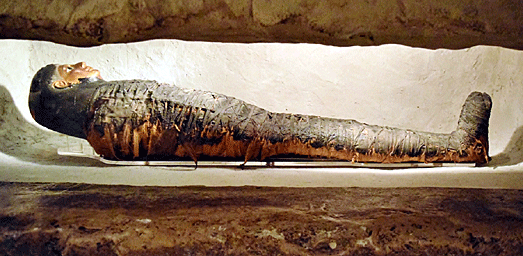
Inside Ancient Egypt
Inside Ancient Egypt offers a glimpse into what life was like for
ancient Egyptians. Twenty-three human mummies are on display as well as
many mummified animals. The exhibit features a three-story replica,
featuring two authentic rooms with 5,000-year-old hieroglyphs of the
mastaba tomb of Unas-Ankh, the son of Unas, the last pharaoh of the
Fifth Dynasty. Also displayed are an ancient marketplace showing
artifacts of everyday life, a shrine to the cat goddess Bastet, and
dioramas showing the afterlife preparation process for the dead.
The Ancient Americas
The Ancient Americas displays 13,000 years of human ingenuity and
achievement in the Western Hemisphere, where hundreds of diverse
societies thrived long before the arrival of Europeans. In this large
permanent exhibition visitors can learn the epic story of the peopling
of these continents, from the Arctic to the tip of South America.
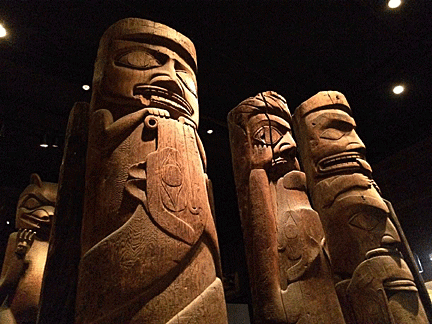
Cultural Halls
Cultural exhibitions include sections on Tibet and China, where visitors
can view traditional clothing. There is also an exhibit on life in
Africa, where visitors can learn about the many different cultures on
the continent, and an exhibit where visitors may "visit" several Pacific
Islands. The museum houses an authentic 19th-century Maori Meeting
House, Ruatepupuke II, from Tokomaru Bay, New Zealand.
Geology Halls
The Grainger Hall of Gems contains a large collection of diamonds and
gems from around the world, as well as a Louis Comfort Tiffany stained
glass window. The Hall of Jades focuses on Chinese jade artifacts
spanning 8,000 years.
<
Back to More Antiques to View
Next Article > |
